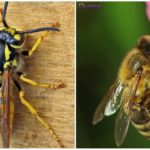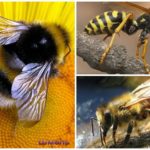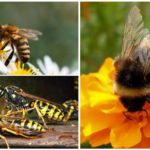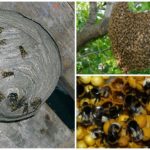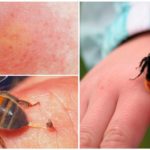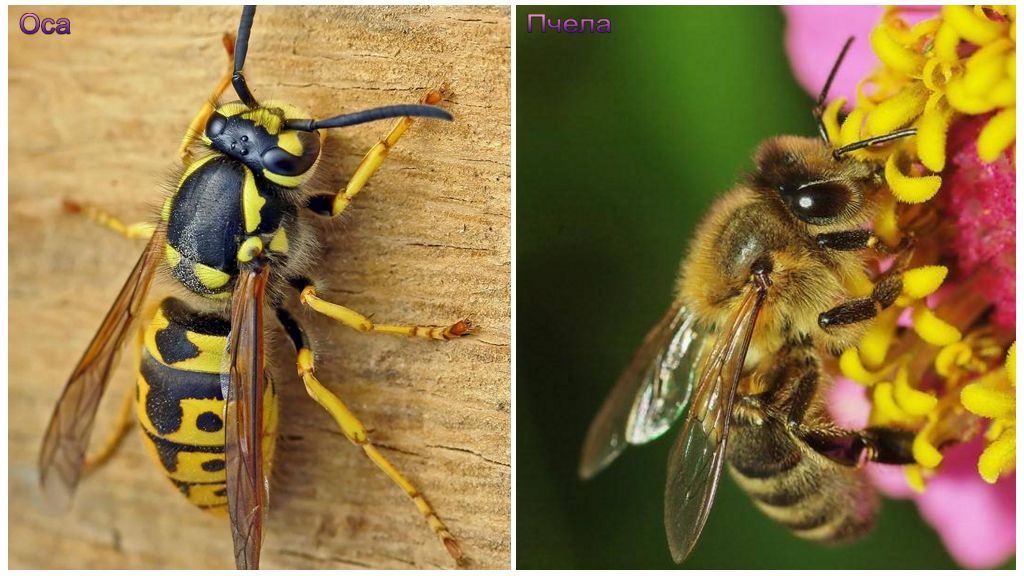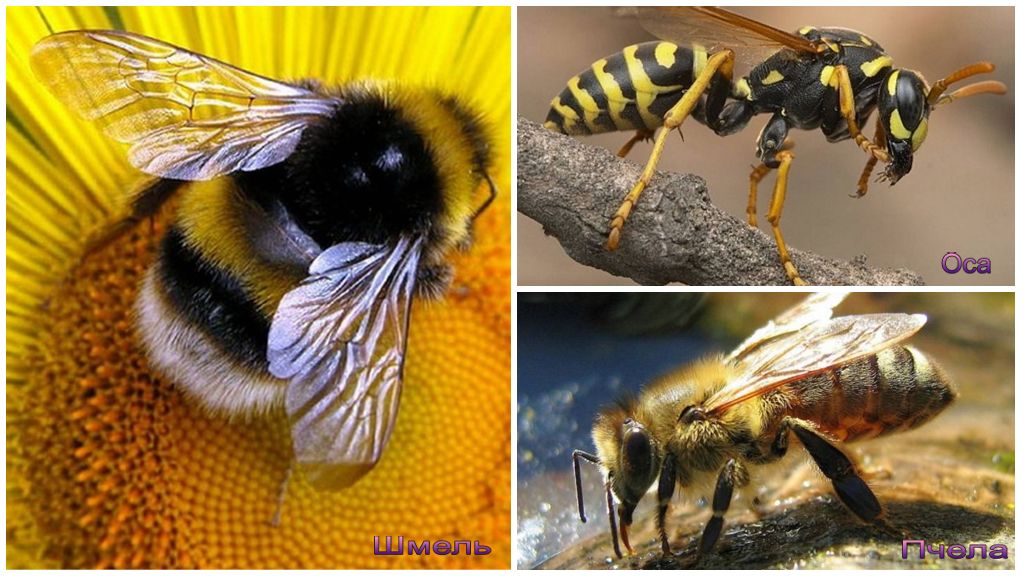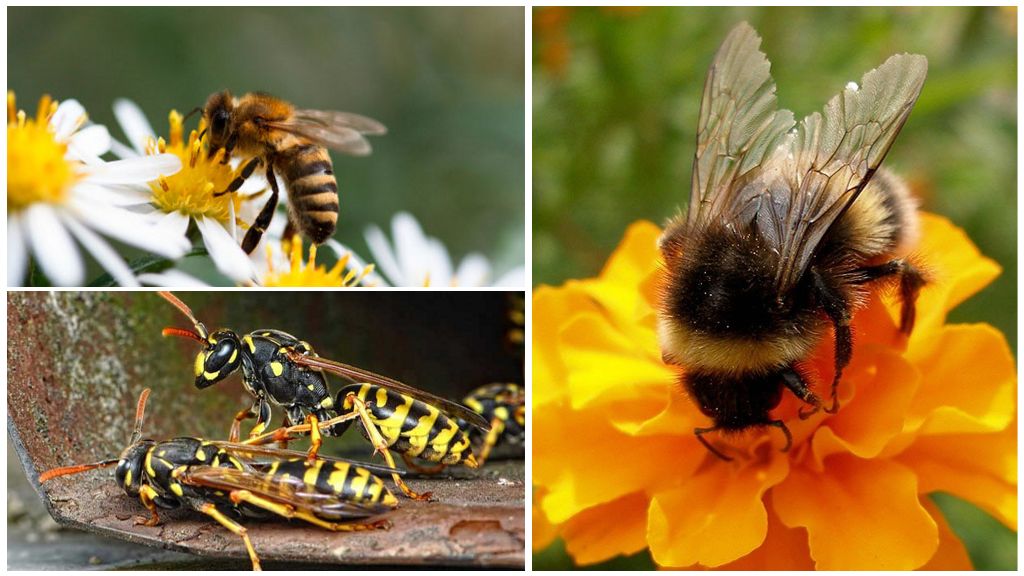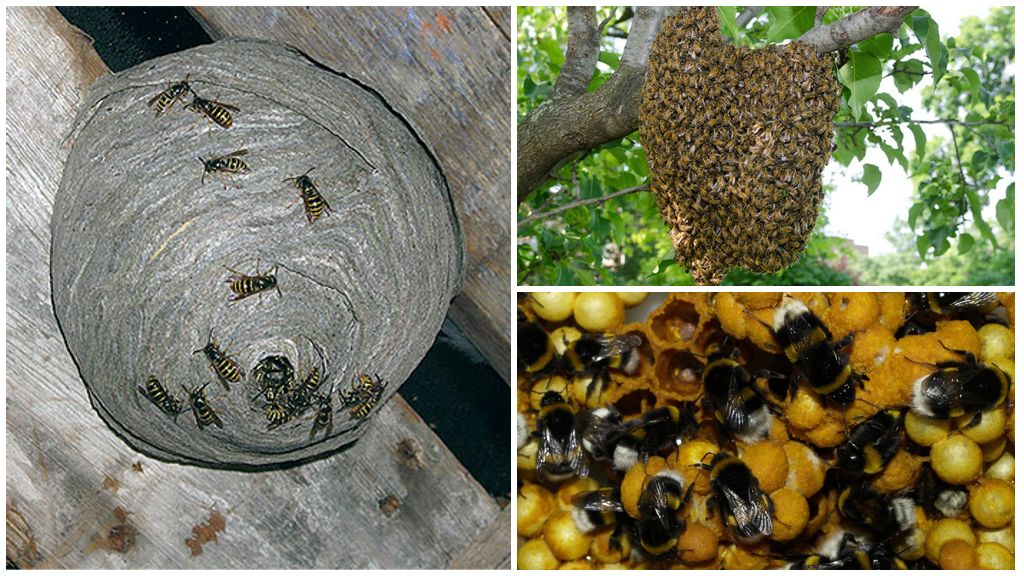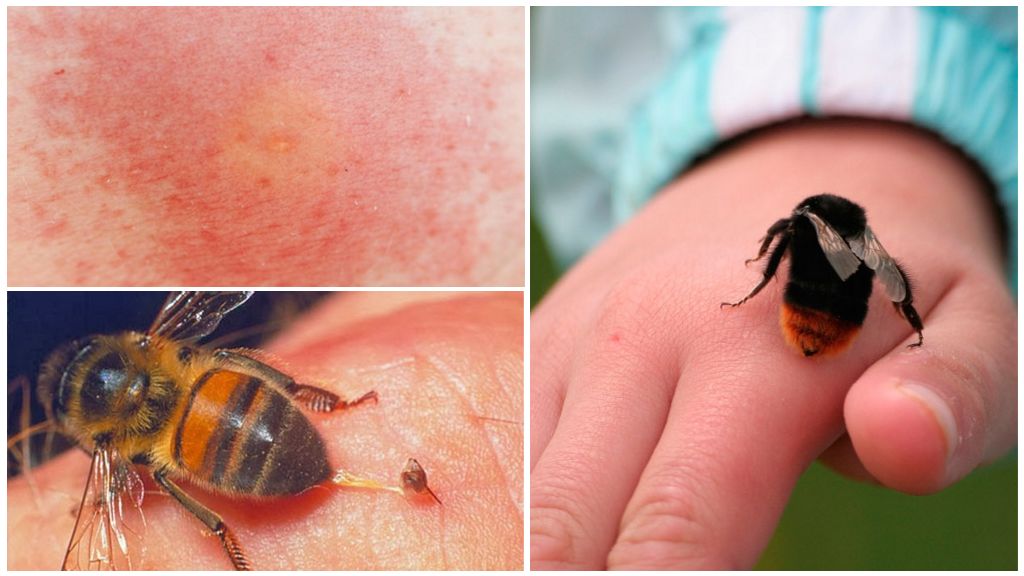Differences of wasp, bee and bumblebee
Content
- Bee and wasp
- Bee, bumblebee and wasp
- Bee, bumblebee and wasp
- Insect nests
- Insect bites
Wasp and bee differ in appearance, behavior, lifestyle. But often they are confused among themselves, not knowing what to expect. This category also includes bumblebee. He tries to stay away from the person, but occasionally meets, even builds his nests at the dacha, garden plot. The difference between the wasp and the bee, as well as the hornet, is noticeable to the naked eye, but only an informed person can distinguish them.
External differences
The difference in size, body structure is significant.
Wasps
Visually appearance wasps elongated, thin. The belly, the chest is connected by a jumper, thanks to which the notion of “wasp waist” has arisen among the people. The body is smooth, slightly lowered in the abdomen, head. Head, front of the chest black. The abdomen of a bright, contrasting color - wide black and yellow stripes. The wings are thin, transparent, with small antennae on the head.
On a note!
You can distinguish a wasp from a bee by its powerful jaws, which are clearly visible when looking carefully at the head. The body size of an ordinary representative does not exceed 1.5 cm. Uterus larger.
How does a wasp differ from a bee yet - in size, structure sting. Do os weapons oblong, without chipping. Resembles a needle. Thanks to this feature, it is easily penetrated under the skin, freely removed. In one act of attack, an insect stings up to 5 times. Thanks to this feature, you can identify the attacker, recognize the enemy. The wasp is able not only to sting, but also to bite. If the insect's chitinous cover is too dense, it is pierced by powerful jaws.
Bees
They look outwardly different, similarities in colors, colors. Have a rounded shape. A noticeable difference between a wasp and a bee in thin elongated limbs.They have massive paws of black color, covered with numerous small hairs. The body size is about 1 cm. The jaws are small, the antennae, large eyes are clearly visible on the head.
On a note!
The differences of wasp and bee in the proportions of the body. In honey plants they are more uniform, there is no clear separation of the chest, abdomen.
The head is small yellow-black. Abdomen shaggy - covered with relatively long dense hairs. The belly is striped. Unlike the wasp representatives, the stripes are narrow, alternating with black, bright orange. Covered with yellow villus. A photo of the difference between a bee and a wasp can be seen below.
Compare the bee and the wasp can by sting, which differs significantly. In bees, the weapon of defense consists of chipping. Reminds saw. Sticks into the skin, tightly fixed. Notching does not allow the bee to get sting back, with a sharp jerk, part of the abdomen comes off, soon the bee dies. Photo of the bee and wasp in the process of bite further.
Bumblebee
Fluffy creation. The appearance of this insect does not even cause concern. It is a slow, calm creature. The body is much larger, more massive, more stocky than bees, wasps. Superficially resembles a shaggy ball. Stripes are yellow-black, wide.Head down to the bottom. Some species of bumblebees are completely black or have bright reddish stripes.
A close-up photo of a wasp and a bee can be seen below.
Differences in flight
If a compare wasp, bee, bumblebee during the flight, you can also find significant differences.
Wasps make sudden movements, easily hover in the air. In one instant they can move from one place to another. In the process of long-term observation, one can notice constant jerk-like movements, frequent change of trajectory.
Bees fly more calmly, measuredly. They do not make sudden movements, trying to quickly land. Do not create annoying buzzing, it is more difficult to notice them by sound than wasps.
On a note!
Flight of the Bumblebee For a long time, experts called it an exception to the rules of aerodynamics. The shaggy individual flies slowly, creates a rather tangible hum.
Behavior features
Bumblebee and wasp have much less similarities than the bee and the bumblebee. The behavior of insects due to their instinctive skills, a variety of food. Bees, bumblebees collect the nectar of plants, thereby providing a full pollination of crops.In the structure of honey plants there is a special bag, in which they collect nectar, and then it is transformed into a bee or bumblebee honey. Bumblebees are unique in that they wake up much earlier than other pollinators. In a special way they warm up their body, they go flying.
Representatives of the wasp family eat fruit juices, nectar, honey. But for the development of larvae requires protein food. For this reason, predators attack other insects, their larvae. Chew their insides, form small balls, give the larvae. In return, they receive the saliva that their young produce. There is a mutual exchange of food.
Interesting!
The wasp swarm periodically attacks bee colonies, ruins the hive in a few hours. Eat honey. There is also a statement that wasps eat bees. They attack weakened, diseased insects, but being inside the hive, paralyze everyone indiscriminately. They drag prisoners to their nest, feed the larvae.
Since wasps are omnivores, they can often be found on the territory of a garden, yard, suburban area, even in an apartment, house. Attracts them to sweet, sour, rotten meat, fish.Wasps fly in small packs, keep at a certain distance. Bees are a handful, and bumblebees prefer to fly one at a time.
Differences in the structure of the nest
For domestic bees, beekeepers build special houses. Inside the insects form wax cells, the material for which they produce themselves. One family has several thousand individuals that work hard, extract nectar, feed the larvae. In the wild, bees occupy hollows in trees, old stumps.
Public wasps live in neststhat is formed from parchment. Get it in a special way. Spit saliva on the wood, in a few minutes the upper layer is scraped off with jaws. Chew several times, get sticky, stinging substance. Honeycombs are formed from it. Externally, the wasp nest resembles a sphere the size of an apple, gray, brown. They fix the hive to a wooden base, form it on a tree, in the ground, under the roof of a house, in a barn, in walls, under a floor, on the balconyit is only natural that people want to get rid of them.
Difference bite
The wasps are characterized by aggressive temperament, rush to attack at the slightest error. They bite several times, then quietly hide from the view. Bites painful, rhinestones cause swelling, swelling, redness. In individuals with individual intolerance to aspen poison develops strong allergic reaction with deterioration of general well-being, laryngeal edema.
Bees sting in case of urgent need. They treasure their sting, this is easily explained. After using the weapon, the insect dies as it flies away without a sting and part of the abdomen. This is a distinctive feature of the bite of a wasp, a bee. The sting continues for some time to pulsate, inject poison. Soreness is somewhat weaker than from wasp attacks. Allergic reaction also develops. Bee sting it doesn’t differ significantly from a wasp sting, the treatment principles are identical.
Bumblebees bite very painfully, but rarely. To piss them off, you need to try hard. These calm creatures prefer to hide, rather than aggressively attack.
Varieties of bees and wasps
According to the latest estimates, about 20 thousand species of bees were found in the world. Of particular importance for humans are honey. Outwardly, they are not very different, lead a similar lifestyle. The bumblebee is also a representative of a large bee family.
Within the family, the types of bees and wasps are working individuals, drones, queen or queen. Working individuals - females incapable of fertilization, the drones are called males, the value of the queen - to reproduce offspring, to lay the foundation of the nest. However, among the waspid species there are single species that do not build nests, do not live in swarms. Conditionally can be divided into 2 types - public or papersingle The largest and most aggressive representative is hornet.
Summarizing
If we compare in size, who is larger than a wasp or a bee, the advantage on the side of the wasp. Dangerous wasp or bee bite is also a winner in the rating of the wasp, but only by the strength of the painful sensations. Bee venom is more dangerous if the sting is not removed in a timely manner. Whoever is more aggressive wins the wasp family again. Representatives are characterized by excessive aggressiveness, nervousness, rush to attack with a small wave of his hand in his direction.

